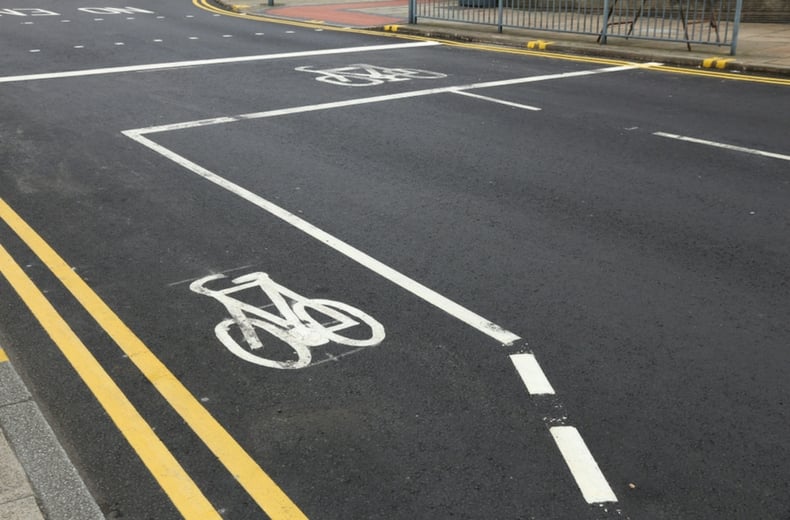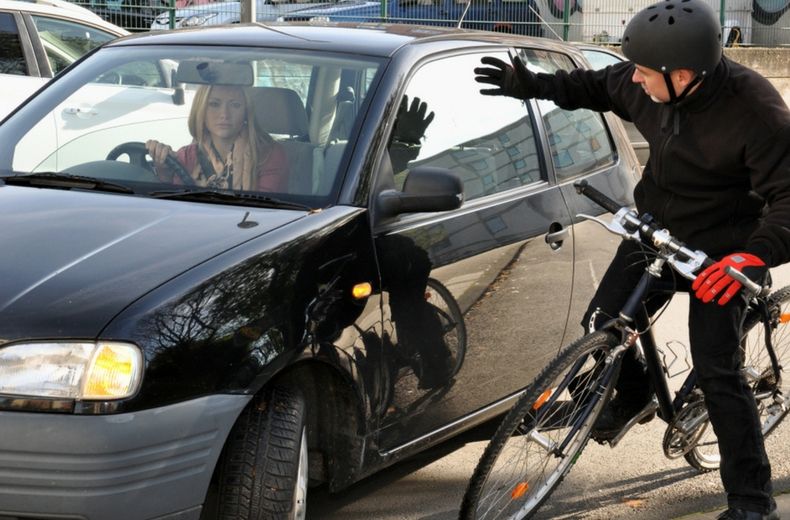The ASL consists of a dedicated box (often painted with a bike symbol) that is placed in front of the regular stop line for vehicles
Read our driving advice guide below to find out more.
What are Advanced Stop Lines (ASLs)?

ASLs (also referred to as bike boxes) are common at UK traffic lights and are put into place to give cyclists a safe place to stop at busy crossings and allow them to be positioned ahead of other traffic so they have more time to pull off as the lights change.
They are designed to improve safety and visibility for cyclists at intersections, especially where cyclists may be competing for space with motor vehicles. You typically see them at traffic lights.
The ASL consists of a dedicated box (often painted with a bike symbol) that is placed in front of the regular stop line for vehicles.
The cyclists can be seen more easily by drivers, and it allows them to start moving before cars once the light turns green, often making it safer to merge into traffic.

SALE – up to 40% off*
Roadside & Recovery from £5.29 a month*
• Cheaper than AA Price Promise or we’ll beat by 20%^
• We get to most breakdowns in 60 mins or less
• Our patrols fix 4/5 breakdowns on the spot

Is it illegal to enter an ASL?
Motorists could receive three penalty points and a £100 fine for stopping inside the Advanced Stop Lines (ASL) when pulling up to a red light.
Rule 178 of the Highway Code states: "Motorists, including motorcyclists, MUST stop at the first white line reached if the lights are amber or red and should avoid blocking the way or encroaching on the marked area at other times, e.g. if the junction ahead is blocked.
"If your vehicle has proceeded over the first white line at the time that the signal goes red, you MUST stop at the second white line, even if your vehicle is in the marked area.
"Allow cyclists time and space to move off when the green signal shows."
What causes the confusion?
Although the Highway Code states you must stop at the first white line, it offers an exception to the rule, saying that if the lights change and the driver is forced to brake quickly, if it’s safer for motorists to stop in the box, rather than risk braking too suddenly.
Also, if a vehicle enters the box while the lights are on green but is unable to clear the area before they turn to red – no offence has been committed.
Furthermore, this makes prosecuting offenders difficult.
PC James Aveling, a city bike patrol officer for more than 15 years, said in a Guardian article on the same subject: "Booking cars which enter the zone is tricky as it's not illegal if they stop in one if a light turns red and they're part-way in. Officers thus have to watch a driver creep in on an already red light."
What does an ASL look like?
Here is a graphic for an Advanced Stop Lines (ASLs):

Want more useful content like this sent straight to your inbox?










